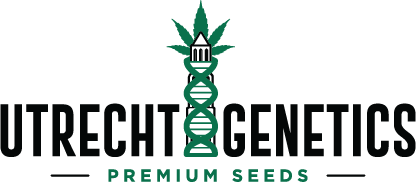Contents:
- What are migraines?
- The link between migraines and cannabis
- What does the research say about cannabis and migraines?
- Can cannabis cause migraines?
- When and how to consume cannabis for migraines
- Cbd and migraines
- When and how to use cbd
- Migraines, the endocannabinoid system, and cannabis
- Which cannabis strains can help ease migraines and headaches?
Migraine severity varies among individuals, ranging from a minor inconvenience to debilitating episodes characterized by visual disruptions, confusion, and intense pain. Some people manage their condition by adopting dietary and exercise strategies as preventive measures. When faced with challenging situations, they resort to potent pain relievers and anti-nausea medications.
Nevertheless, certain patients opt to avoid conventional drugs due to their limited effectiveness in alleviating symptoms associated with persistent and resistant migraines[1].
Consequently, certain individuals turn to the consumption of cannabis through smoking, vaping, or ingestion in their quest for relief. Numerous personal accounts provide support for this assertion, and ongoing research is actively exploring the potential benefits of the plant. Therefore, the question remains: Can marijuana effectively alleviate migraines? Continue reading to find out.
What Are Migraines?
A migraine is characterized as a recurring pulsating headache that typically targets one side of the head. Distinguishing itself from ordinary headaches, migraines are significantly more intense and incapacitating. This neurological condition stands as the most prevalent type of headache disorder, affecting roughly 10% of the population annually.
Regrettably, the medical system often falls short in providing effective assistance, with only one-third of patients receiving appropriate treatment[2].
-
Symptoms of Migraine
Migraines can be classified into two categories: migraines with aura and migraines without aura. Migraine auras primarily involve visual symptoms that occur before or during an attack. These visual disturbances can present as colored spots, blind spots, tunnel vision, or zigzag patterns. However, auras can also manifest as muscle weakness, confusion, tingling sensations, or difficulties with speech.
Regardless of the presence of auras, migraines share several key symptoms in common:
| Headache attack lasting 4–72 hours | Pulsing/throbbing pain | Pain on one side of the head | Nausea and vomiting |
| Sensitivity to light and sound | Yawning | Irritability | Shoulder and neck stiffness |
-
What Causes Migraines?
The precise cause of migraines remains elusive, yet researchers have proposed several theories over the years in their pursuit of understanding the underlying mechanisms. Some of the notable theories include:
- Vascular theory: Prior to the mid-20th century, a prevailing theory suggested that migraines occur due to the enlargement of the carotid arteries, which are significant blood vessels located in the neck[3].
- Neurovascular theory: This theory emphasizes the neurological basis of migraines, proposing that the vascular alterations are merely secondary to events occurring within the central nervous system[4].
- Neurotransmitter theory: Certain studies indicate that individuals with migraines frequently exhibit reduced levels of serotonin, a neurotransmitter. Interestingly, medications that decrease serotonin levels have been found to increase the frequency of migraine attacks[5].
- Brain stem theory: TAccording to this theory, the generation of migraine attacks may be attributed to the periaqueductal gray matter region of the brainstem[6].
- Biopsychosocial theory: Certain researchers highlight the psychological aspects of migraines, including factors such as stress, pain catastrophizing, and even personality traits[7].
Apart from underlying causes, there are various factors that can trigger a migraine attack, which include:
| Emotional stress | Skipping a meal | Caffeine | Hormonal changes in females |
| Sensitivity to food preservatives | Changing weather conditions | Loud noises |
The Link Between Migraines and Cannabis
So, how does cannabis come into play? Why would a humble herb that emerges from the earth have any positive impact on debilitating migraine attacks? To address this question, we must delve into the realm of the endocannabinoid system, commonly referred to as the ECS.
Similar to our digestive, nervous, immune, and musculoskeletal systems, our bodies possess an ECS. Each of these physiological systems serves distinct purposes: the immune system safeguards us against pathogens, the digestive system aids in nutrient assimilation. And what about the ECS? This comprehensive network exists throughout the body and is responsible for maintaining equilibrium among other systems. It regulates homeostasis—the optimal biological state that ensures smooth functioning, not too fast or too slow.
The ECS consists of receptors, endocannabinoids (signaling molecules), and metabolic enzymes responsible for synthesizing and breaking down endocannabinoids. Various cell types generate endocannabinoids as needed, which then bind to ECS receptors to induce specific changes in target cells. While the ECS encompasses multiple receptors, the primary types are cannabinoid receptor 1 (CB1) and cannabinoid receptor 2 (CB2).
Now, here’s where it gets fascinating. The cannabis plant produces molecules called phytocannabinoids that bear a striking resemblance to our own endocannabinoids. These chemical compounds are so similar to our endocannabinoids that they can bind to ECS receptors and modulate enzyme activity. In essence, by utilizing phytocannabinoids, we can effectively influence and manipulate the ECS.
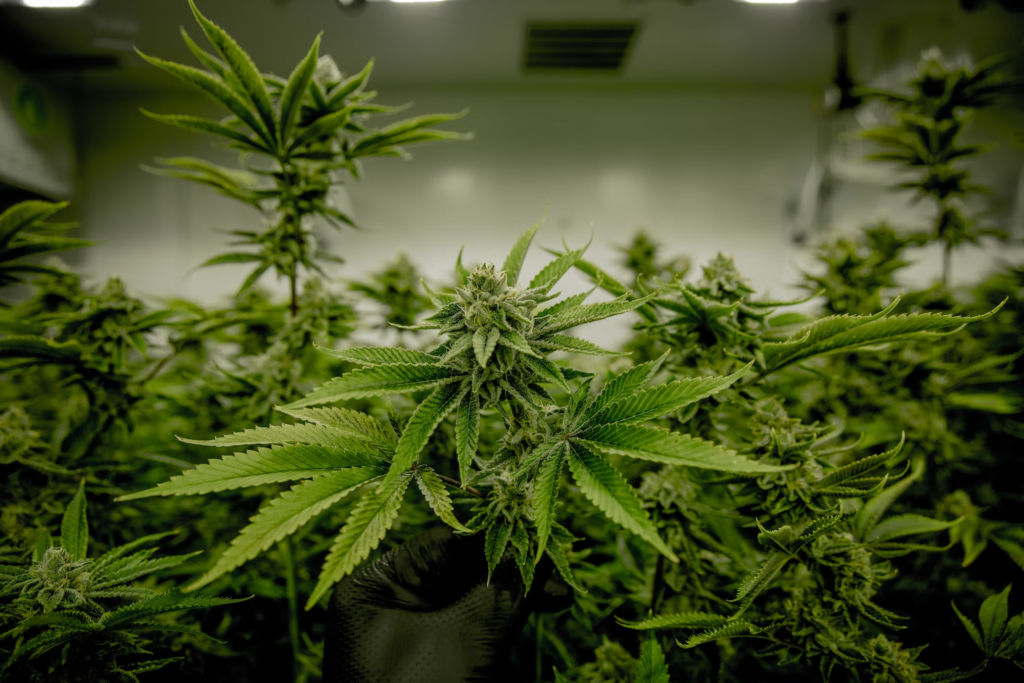
Given the ECS’s role in regulating various systems, it’s unsurprising that endocannabinoid levels have been implicated in migraine attacks. Researchers have established a connection between ECS dysregulation and this condition. In response to inflammation, cells produce the endocannabinoid anandamide, which binds to both CB1 and CB2 receptors. Clinical observations have revealed decreased levels of anandamide in cerebrospinal fluid and plasma samples from migraine patients[8].
As a result, these findings position migraine alongside conditions like fibromyalgia and irritable bowel syndrome. “Low endocannabinoid tone,” characterized by reduced levels of circulating endocannabinoids, is believed to potentially contribute to ECS dysregulation known as clinical endocannabinoid deficiency[9]. Currently, researchers are investigating whether phytocannabinoids can effectively serve as substitutes for their endogenous counterparts.
What Does the Research Say About Cannabis and Migraines?
Do cannabis’s potential benefits in relieving migraine attacks translate into real-world effectiveness? Many individuals claim that smoking a joint or using cannabis helps alleviate throbbing pain and nausea. Although these anecdotes are encouraging, they do not offer an accurate depiction of reality. The true efficacy of cannabis lies in repeatable and robust scientific studies, which unfortunately are currently lacking in controlled human trials.
In the following discussion, we will explore the existing research to approach the closest possible answer to this question.
-
Medical Marijuana for Migraines
Can medical marijuana provide relief for migraines? The answer to this question depends on how we define “medical marijuana.” Although the resinous flowers may appear simple, they contain numerous phytochemicals such as cannabinoids, terpenes, and flavonoids, each with its own distinct effects on the human body.
With thousands of cultivars available, each containing a unique ratio of these chemicals, it becomes challenging to precisely quantify the cellular-level effects. Nonetheless, current research predominantly focuses on investigating the potential of high-THC medical marijuana varieties for treating migraine attacks.
In a 2019 study conducted at Washington State University, data was collected from over 1,300 migraine patients who used cannabis as a treatment. Remarkably, 49.6% of participants reported that cannabis helped reduce the severity of their migraine attacks[10].
Similarly, a 2021 study utilized an online survey to gather anecdotal data from 589 adult cannabis users residing in states where medical marijuana was accessible. More than 70% of the respondents affirmed using cannabis to alleviate their migraine attacks. However, the researchers concluded that further studies are necessary to determine the most effective cannabis forms, potencies, and dosages for treating migraine headaches[11].
A human trial titled “Efficacy of Inhaled Cannabis for Acute Migraine Treatment” is scheduled for publication in December 2021. This phase two trial investigated the use of both high-THC and high-CBD medical marijuana for treating migraines, aiming to provide further evidence to support existing anecdotal data[12].
From a physiological perspective, THC acts as a mimic of anandamide at the CB1 receptor, but with even greater potency. In instances of clinical endocannabinoid deficiency, the psychoactive cannabinoid theoretically has the potential to substitute for anandamide and temporarily fulfill its role.
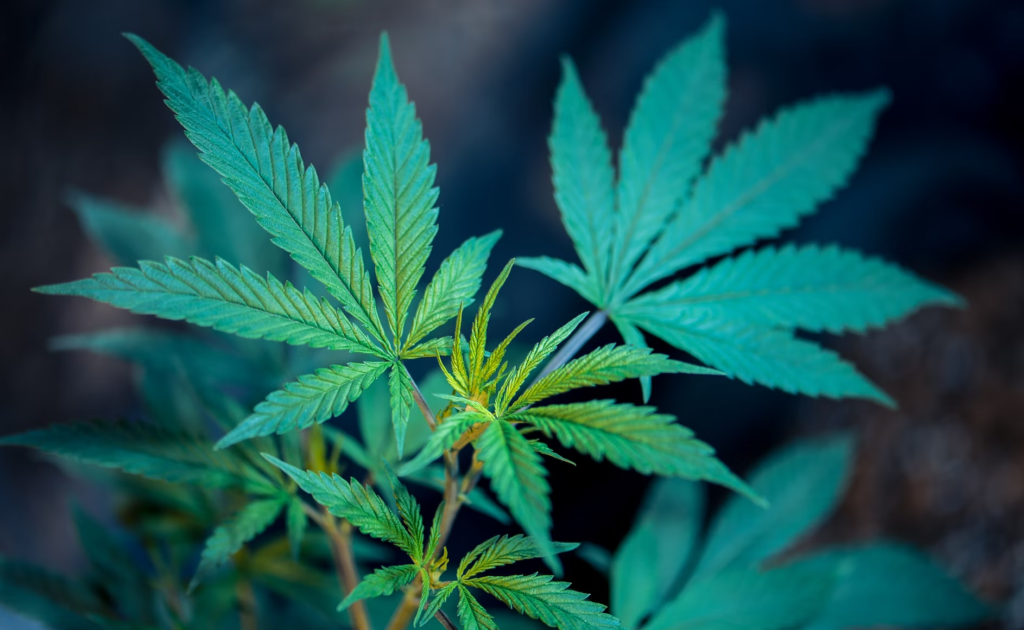
-
Dronabinol and Migraines
In 1985, the Food and Drug Administration (FDA) approved dronabinol, a synthetic version of THC, for the treatment of chemotherapy-induced nausea and vomiting. Ongoing research is currently investigating the effectiveness of this medication in treating chronic migraine headaches and refractory cluster headaches[14].
Dronabinol interacts with the same receptor sites as THC, but it is only available in oral capsule form for patients. When taken orally, the molecule undergoes conversion into the more potent 11-hydroxy-THC in the liver, resulting in intoxicating effects that some patients may find unpleasant. The FDA has not yet approved dronabinol for migraine treatment, and the medication’s prescribing information includes headaches as a potential adverse effect[15].
Can Cannabis Cause Migraines?
Even if cannabis proves effective for individuals suffering from migraines, they may encounter a resurgence of their attacks in a more severe form. Some patients experience the onset of new headaches or a worsened version of their original condition when using cannabis excessively. Referred to as rebound headaches or medication-overuse headaches, this phenomenon can arise with various medications.
However, when it comes to cannabis, the research is still in its early stages, and the relationship remains unclear. A preliminary study conducted at Stanford University School of Medicine discovered that chronic migraine patients who use cannabis are approximately six times more likely to experience overuse headaches compared to non-users. Nevertheless, researchers are still uncertain about the association between the two and whether patients are using cannabis to alleviate rebound headaches rather than the herb directly causing the condition[16].
When and How To Consume Cannabis for Migraines
When it comes to utilizing cannabis for migraine attacks, there are several options to consider. While much of the research centers around inhaled cannabis, some individuals may prefer consuming edibles as an alternative approach.
| Smoking | Inhaling cannabis through smoking allows cannabinoids to enter the bloodstream rapidly via the lungs’ alveoli, leading to nearly instantaneous effects. However, smoking comes with evident drawbacks, particularly when combining tobacco with cannabis to create spliffs. Apart from negatively impacting lung health, smoking can potentially trigger headaches in certain individuals. |
| Vaping | Vaping offers a quick delivery of cannabinoids, utilizing lower temperatures compared to smoking. Instead of burning cannabis flowers, vaporizers employ conduction or convection heating systems to vaporize cannabinoids and terpenes, resulting in reduced tar and toxic chemical exposure. Research examining the use of vaping for migraines has also found no correlation between this method of administration and the occurrence of overuse headaches[10]. |
| Edibles | Edibles provide an alternative method of administering cannabis compared to inhalation. Consuming infused treats allows THC to pass through the stomach and liver, converting the molecule into 11-hydroxy-THC. While certain users may find the potency of the experience overwhelming, others appreciate the borderline-psychedelic effects it can offer. It is advisable to reserve this option for evening use, away from work and other responsibilities, as it may be more suitable for some users. |
CBD and Migraines
CBD, a prominent component of cannabis, has garnered significant attention in terms of its clinical potential. Regrettably, there is a lack of scientific studies specifically examining the effects of CBD on migraines. The limited research available on cannabis and headaches has primarily investigated the combined effects of CBD and THC. While some positive outcomes have been observed, this research does not provide precise insights into the isolated impact of CBD on headache or migraine sufferers.
Although the exact influence of CBD on migraines and their symptoms remains uncertain, anecdotal evidence is steadily accumulating. In 2021, Axon Relief, a CBD company based in Utah, conducted a survey[16] among its customers. The survey aimed to evaluate how Axon CBD products, specially formulated to provide migraine relief, influenced their headaches and migraines.
In the survey, 105 participants were asked to assess the severity of their migraines using the Headache Impact Test (Hit-6™), a scientifically validated measure for measuring headache and migraine intensity. The results revealed that after using Axon products for 30 days, 86% of respondents reported a decrease in their headaches or migraines. On average, participants experienced a reduction of nearly four headache days compared to their usual frequency. Notably, individuals identified as chronic migraine sufferers (experiencing 15 to 29 headache days within a 30-day period) reported a significant 33% reduction in their headaches.
While specific research on CBD in the context of migraines is still lacking, studies have demonstrated that the broader endocannabinoid system holds potential as a target for migraine treatments. The CB1 receptor, which is highly prevalent throughout the brain, has been found to impact various neurological pathways associated with pain when activated by either endocannabinoids or phytocannabinoids[17].
Although CBD does not naturally exhibit a strong affinity for CB1 receptors, research indicates that it may interact with over 65 different molecular targets in more intricate ways[18]. While many of these targets may extend beyond the conventional understanding of the endocannabinoid system (ECS), CBD still engages with receptors that could potentially contribute to the treatment of headaches or migraines. Some of these receptors include:
- 5-HT1A serotonin receptors
- TRPV1: TRPV1 receptors, also referred to as “capsaicin receptors,” can be stimulated by eugenol, an essential oil found in vanilla beans. Eugenol has a rich historical record[19] of being used for headaches, particularly in ancient Egyptian civilizations.
- GPR55[20]
Are There Risks to Taking CBD for Migraines?
In late 2017[21], the World Health Organization conducted an assessment and determined that CBD in its pure form does not appear to have the potential for abuse or cause harm. However, it is important to note that CBD is not without side effects[22]. Some individuals may experience nausea, fatigue, and irritability, and CBD can also interact with liver enzymes involved in drug metabolism, potentially influencing the breakdown rate of various medications.
Furthermore, recent research[23] suggests that using cannabis while experiencing headaches and migraines may lead to the occurrence of “rebound headaches.” This phenomenon is often associated with excessive cannabis use and the drying effect that smoking or vaping can have on mucous membranes.
When and How to Use CBD
To effectively manage migraines, it is advisable to steer clear of smoking. As previously mentioned, smoking CBD, cannabis, or any other herb can dehydrate mucous membranes and thicken saliva, which is undesirable when already experiencing a headache.
Given the rapid onset of migraines and headaches, many individuals prefer CBD administration methods that offer high bioavailability and faster effects.
Outlined below are some of the commonly utilized ways in which CBD is used by individuals dealing with migraines and headaches:
| CBD oils and tinctures | CBD oils and tinctures can be consumed sublingually, allowing them to be partially absorbed through the mucous membranes of the mouth. This method provides a faster onset of effects, typically within approximately 15 minutes. |
| CBD oral spray | Oral CBD sprays are formulated to be absorbed directly in the mouth instead of being digested, resulting in a relatively quick onset of effects, typically within about 15 minutes. This is similar to the administration of CBD oils sublingually. |
| Vaped CBD flower or concentrate | Vaping CBD offers the quickest onset of effects, providing relief within minutes. However, similar to smoking, vaping CBD can cause dryness in mucous membranes. Additionally, it can be more challenging to accurately measure doses when vaping CBD, particularly with dry flower, which increases the risk of experiencing a rebound headache. If you choose to vape CBD for headache or migraine treatment, it is essential to stay well-hydrated and monitor your dosage carefully. |
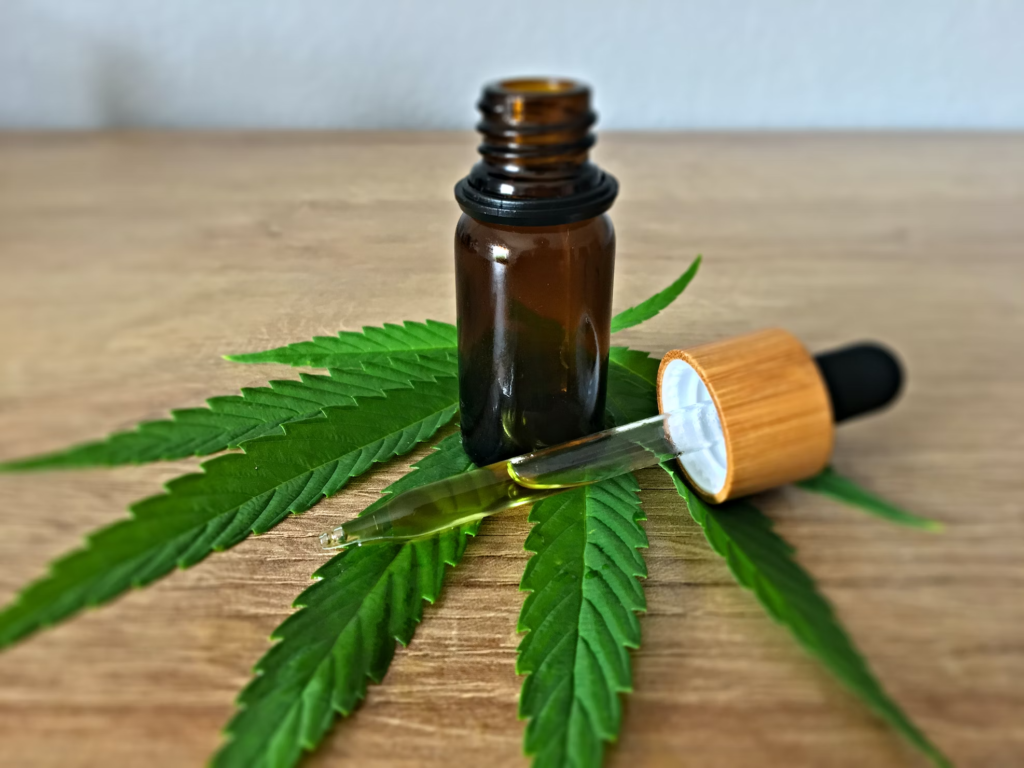
Migraines, the Endocannabinoid System, and Cannabis
In summary, clinical trials are necessary to provide clarity and establish the effectiveness of cannabis for treating migraine attacks. Nonetheless, anecdotal evidence presents an encouraging outlook. Furthermore, studies exploring clinical endocannabinoid deficiency suggest that the endocannabinoid system (ECS) may play a fundamental role in the underlying mechanisms of this condition.
Which Cannabis Strains Can Help Ease Migraines and Headaches?
Certain cannabis strains seem to be more effective in alleviating migraine attacks compared to others. Through extensive user feedback, we have identified standout cultivars in our comprehensive genetic collection. Prepare for potent THC content, delightful terpene profiles, and satisfying yields when you explore these exceptional strains.
White Widow
White Widow, renowned for its stunning white trichome-covered buds, holds a legendary status among cannabis strains worldwide. This well-balanced hybrid, with an equal blend of indica and sativa genetics, is often hailed as one of the top and most reliable cultivars to cultivate and enjoy. It provides an exceptionally potent and nearly psychedelic high that combines cerebral stimulation with profound relaxation. The flavor profile of White Widow is characterized by a refreshing and pure taste, featuring pine notes complemented by subtle citrus undertones. With a THC content of 19%, White Widow can be a suitable option for relieving the symptoms of an impending migraine.
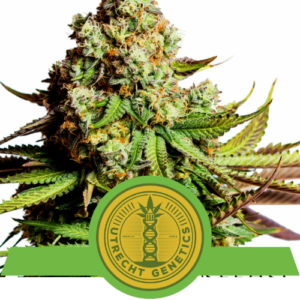
OG Kush
OG Kush remains a beloved and timeless strain cherished by numerous cannabis enthusiasts. Its devoted following appreciates the strain for its highly potent smoke, featuring the signature OG dankness accompanied by subtle citrus undertones. Above all else, the immense potency of this 75% indica is what truly captivates users. Its effect provides an exceptional level of relaxation for both the body and mind. As a result, this iconic West Coast strain has become a favorite among medicinal users seeking relief from the diverse physiological symptoms associated with migraines.

Chocolate Haze
Chocolate Haze, a well-loved strain, is an exceptional choice for individuals dealing with conditions like arthritis, muscle pain, stress, and migraines. This predominantly sativa strain (95% sativa) offers a remarkably potent effect that is simultaneously uplifting and cerebral. Its euphoric and positive high makes Chocolate Haze a favorable option for those seeking a mood-enhancing experience. Notably, this strain delights the senses with its distinct chocolate flavor infused with delightful hints of sweetness and earthiness.

Sour Diesel
Renowned for more than just its distinctive flavor adored by cannabis enthusiasts, Sour Diesel stands as one of the most renowned strains. Originating from sunny California, this predominantly sativa hybrid offers a remarkably potent and highly aromatic smoke that combines fuel-like undertones with herbal and sour flavors. With a THC content of 19%, Sour Diesel delivers a potent body high that proves effective in alleviating headaches and reducing stress levels.

Green Crack Punch
Green Crack Punch is an exceptional cannabis strain that combines the best qualities of Green Crack, renowned for its uplifting and energizing effects, with the potency of Purple Punch. This hybrid cultivar leans heavily towards the relaxing indica side. The combination of these two strains creates a remarkable and enjoyable experience. It provides a motivational and energizing boost while simultaneously inducing a full-body relaxation. With a potent THC content measuring up to 20%, this 60% indica strain is an excellent choice for medicinal users seeking a versatile option for daytime dosing.

Medical Disclaimer: The information provided on this website is intended for general educational purposes only and should not be considered as professional medical or legal advice.
At Royal Queen Seeds, we do not support, endorse, or encourage the use of legal or illegal drugs. We cannot be held responsible for any content from external references or linked pages that promote or endorse the use of legal or illegal drugs or engage in illegal activities. It is recommended to consult with your doctor or healthcare practitioner before using any products or methods mentioned, referenced, or linked to on this website.
- European headache federation consensus on the definition of resistant and refractory migraine | The Journal of Headache and Pain | Full Text https://thejournalofheadacheandpain.biomedcentral.com
- https://www.sciencedirect.com/science/article/pii/S1875459712000379
- PERSONALITY FEATURES AND REACTIONS OF SUBJECTS WITH MIGRAINE | Archives of Neurology & Psychiatry | JAMA Network https://jamanetwork.com
- Migraine pathogenesis: the neural hypothesis reexamined. | Journal of Neurology, Neurosurgery & Psychiatry https://jnnp.bmj.com
- https://headachejournal.onlinelibrary.wiley.com/doi/10.1111/j.1526-4610.2012.02168.x
- https://headachejournal.onlinelibrary.wiley.com/doi/full/10.1046/j.1526-4610.2001.041007629.x
- OBM Neurobiology | Psychological Considerations in the Etiology and Pathophysiology of Migraines https://www.lidsen.com
- https://www.researchgate.net/publication/323849698_Endocannabinoid_System_and_Migraine_Pain_An_Update
- Clinical Endocannabinoid Deficiency Reconsidered: Current Research Supports the Theory in Migraine, Fibromyalgia, Irritable Bowel, and Other Treatment-Resistant Syndromes – PMC https://www.ncbi.nlm.nih.gov
- DEFINE_ME https://www.jpain.org
- https://www.sciencedirect.com/science/article/pii/S0965229920318860
- Efficacy of Inhaled Cannabis for Acute Migraine Treatment – Full Text View – ClinicalTrials.gov https://clinicaltrials.gov
- FAAH inhibition as a preventive treatment for migraine: A pre-clinical study – PubMed https://pubmed.ncbi.nlm.nih.gov
- The Use of Cannabis for Headache Disorders – PMC https://www.ncbi.nlm.nih.gov
- https://www.accessdata.fda.gov/drugsatfda_docs/label/2017/018651s029lbl.pdf
- Medication Overuse Headache in Chronic Migraine Patients Using Cannabis: A Case-Referent Study | Research Square https://www.researchsquare.com
- Study Finds CBD Is An Effective Treatment For Migraine https://www.forbes.com
- Cureus | Cannabinoid Receptors and Their Relationship With Chronic Pain: A Narrative Review https://www.cureus.com
- Molecular Targets of Cannabidiol in Neurological Disorders – PMC https://www.ncbi.nlm.nih.gov
- Targeting Serotonin1A Receptors for Treating Chronic Pain and Depression – PMC https://www.ncbi.nlm.nih.gov
- Use vanilla and other natural remedies to relieve and prevent headaches – NaturalNews.com https://www.naturalnews.com
- GPR55 in the brain and chronic neuropathic pain – PubMed https://pubmed.ncbi.nlm.nih.gov
- Drugs (psychoactive): Cannabidiol (compound of cannabis) https://www.who.int
- Cannabidiol (CBD): What we know and what we don’t – Harvard Health https://www.health.harvard.edu
- Cannabis Use Linked to Increased Prevalence of MOH Among Chronic Migraineurs https://www.ajmc.com
- This content is solely for educational purposes. The information presented is based on research compiled from external sources.






